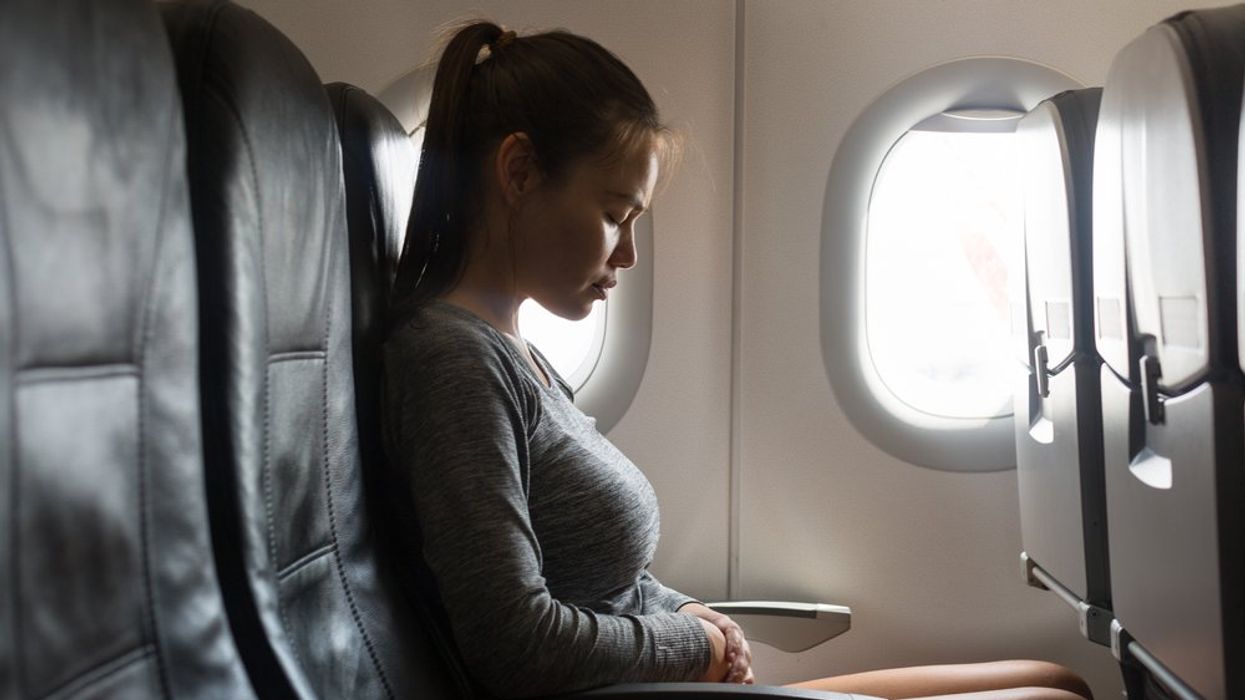(CNN) — With abortion banned in more than a dozen states and restricted in many others, it’s become about twice as common for people in the United States to travel across state lines for their abortion care, a new analysis found.
Nearly 1 in 5 people who had an abortion in the first half of 2023 – more than 92,000 people – traveled across state lines for their care, according to a report from the Guttmacher Institute, a research and policy organization focused on sexual and reproductive health that supports abortion rights. In a similar timeframe in 2020, before the US Supreme Court’s Dobbs decision revoked the federal right to abortion, less than 1 in 10 people left their home state for an abortion – about 50,000 fewer people.
The data probably understates the impact that the Dobbs decision has had, says Isaac Maddow-Zimet, a data scientist with the Guttmacher Institute and lead researcher for the new report. More people are traveling for abortion care, and they’re traveling farther – largely because many states with bans and restrictions border each other.
“Folks from Texas, for example, might have been traveling to Oklahoma [in 2020]. Now, in 2023, those folks are still traveling, but they can’t travel to Oklahoma anymore. It leads to a situation where people have to cross multiple state lines and travel very far distances,” Maddow-Zimet said. “And when you have to travel so much farther, the costs start to multiply. It really implies much higher financial costs and much higher logistical costs.”
The increase in travel is changing the clinical needs for people seeking abortions, and providers are adapting.
Clinics in Ohio are seeing patients at later gestational age, said Dr. Adarsh Krishen, chief medical officer of Planned Parenthood of Greater Ohio. And although medication abortion is still most common, more patients are opting for procedural abortion, he said, especially those who have traveled from other states who want to be sure it was effective.
“We treat each patient as an individual. Our commitment is to make sure that they’re getting the health care they need and deserve,” Krishen said. “There are just added layers of complexity.”
Supporting patients outside of the exam room also looks different.
“The abortion itself is the same no matter if you come from a banned state or you come from a state where abortion is still protected,” said Amy Hagstrom Miller, the founder and chief executive officer of Whole Woman’s Health, an abortion provider with clinics in multiple states. “But when a patient is in our clinic, lots of different things come into effect.”
People who traveled for abortion care may have time pressures, with a flight to catch or a long drive home, she said. Many have driven hundreds of miles and often travel with the family – both children and elders – whom they support.
Whole Woman’s Health has adapted its waiting rooms accordingly, Hagstrom Miller said. In New Mexico, for example, clinics have a separate waiting room area with toys, snacks and comfortable couches to better serve patients and their families, especially those who have traveled for long hours.
Nearly three-quarters of the abortions in New Mexico were provided to people who had traveled across state lines, according to the new data from the Guttmacher Institute. More than 8,200 people from out of state had an abortion in New Mexico in the first half of 2023. Only Illinois and North Carolina saw more out-of-state patients.
“The amount of things that people bring with them, literally and figuratively, is very different,” Hagstrom Miller said. “They’re tired and fatigued, but mostly they’re just so resolved. They’ve gone through so much to get that appointment. There is not indecision.”
The new data from the Guttmacher Institute is based on a monthly survey of a core set of providers and broadened to the state level using a model that also factors in historical trends. Estimates represent abortions provided within formal health care settings, including in-person clinics and telehealth, but do not include data on self-managed abortions, such medication abortion provided by AidAccess.
Earlier reports have found that abortions increased in the US overall after the Dobbs decision, especially in states that border those with bans.
But the abortion landscape in the US continues to fluctuate, and looming uncertainty threatens the abortion access that remains, particularly in the South.
South Carolina had become a “reliable source for abortion care in the region in the post-Dobbs era,” according to the Guttmacher Institute report. More than 40% of abortions there in the first half of 2023 – about 2,500 – were provided to people who traveled from other states, up from 3% in 2020. But a six-week ban took effect in August, and monthly abortions were slashed to a fifth of what they were a month earlier, Guttmacher data shows – an even greater cut than Texas and Georgia saw when their six-week bans took effect.
A pending decision from the Florida Supreme Court could bring similar restrictions to the state, which would have even larger ripple effects, Maddow-Zimet said.
“It really becomes out-of-reach – an obstacle that is perhaps one too many – for many people to be able to access care,” he said.
Abortion bans and restrictions have increased the demand for abortions in many states where it remains legal, but not all of the increase can be attributed to out-of-state patients, the Guttmacher data suggests.
In Illinois, there were nearly 19,000 more abortions in the first half of 2023 than there were in half of 2020. The rise in the number of people who traveled to Illinois for an abortion represent about 70% of that increase, meaning about 30% was among residents seeking care.
“A lot of the policies that states are passing, or other kinds of support that’s available for abortion patients more broadly, may be initially focused on helping folks traveling from out of state – which it does – but it also really helps to improve access for residents of those states,” Maddow-Zimet said. “In Illinois, we have this situation where a lot of clinics have scaled up capacity, a lot of funds have increased support, and that has definitely helped manage the huge amount of people who are coming in. And it’s also improved access for folks living in Illinois. It helps both sides of that story.”
Still, despite the increased support and rise in abortions overall, broader trends suggest that thousands were not able to overcome the increased barriers to care.
A separate analysisestimated that nearly a quarter of people seeking an abortion in the US were unable to get one due to bans that took effect after the Dobbs decision, leading to about 32,000 more births than expected in the first half of 2023.
“How many people get left behind? We get to see and study how many people make it and actually get their abortion. It’s much more difficult to study the folks that don’t,” Hagstrom Miller said. “And now there’s this huge, different borderland – what does it mean to be on the frontier? What does it mean to be in southwestern Virginia or southern Illinois or Kansas, and what’s that going to mean for the people who travel into those places?”
The-CNN-Wire
™ & © 2023 Cable News Network, Inc., a Warner Bros. Discovery Company. All rights reserved.
Abortion laws create confusion

Video Source: Advocate Channel
- Right-Wing Opposition to Abortion Isn't About Saving Lives ›
- Over Half of Americans Are Against Republican Abortion Bans ›
- The Biggest Takeaway From the 2023 Elections: Abortion Rights Prevail ›
- Births Have Increased in States With Abortion Bans: 'Assault on Reproductive Autonomy' ›
- Texas Has Legalized the Torture of Pregnant Women ›
- Kamala Harris Will Embark on a ‘Reproductive Freedoms Tour’ — Here's What That Means ›


















































